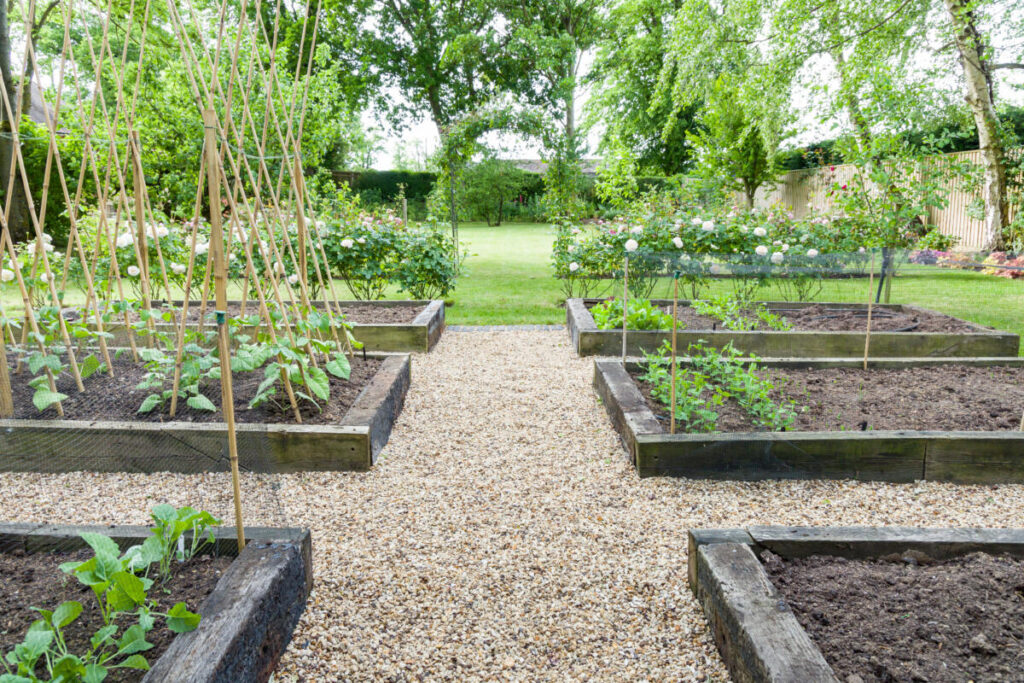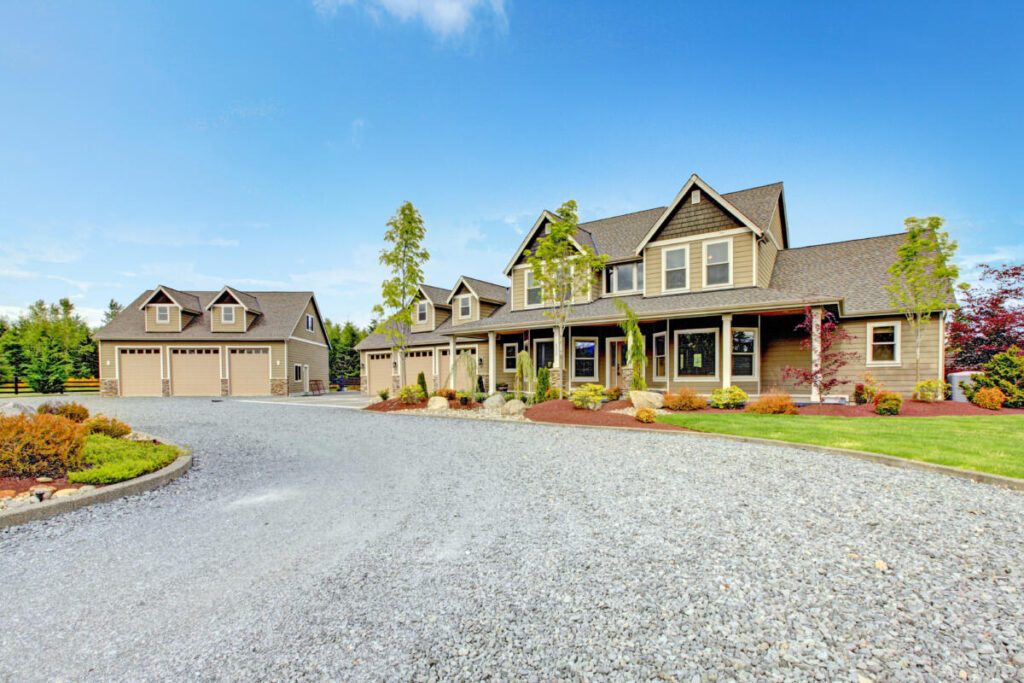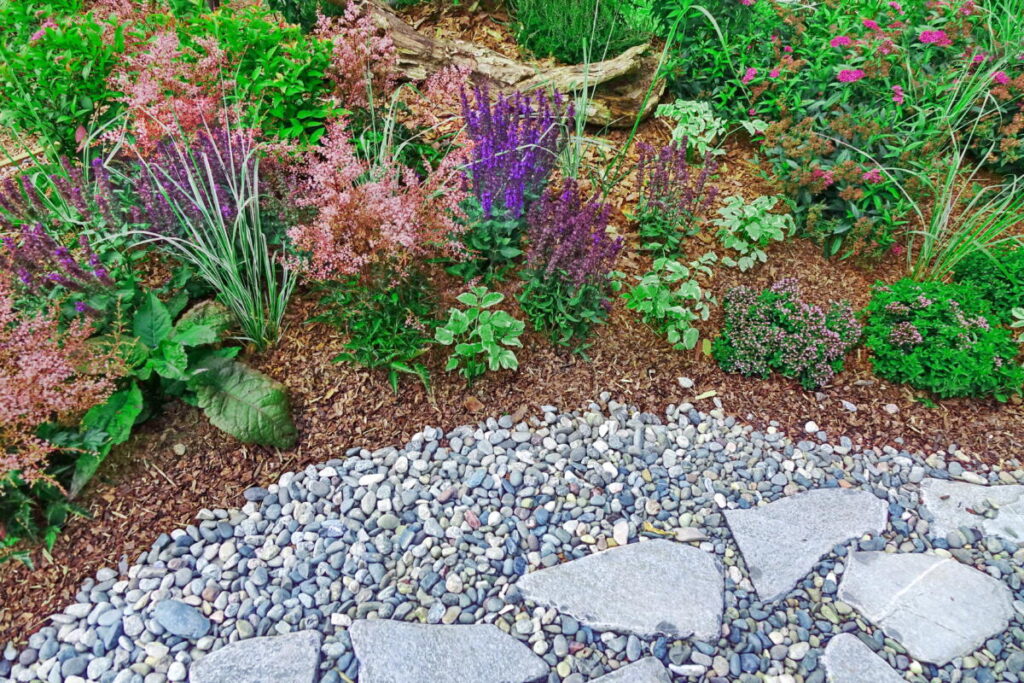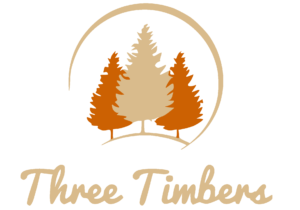Gravel is a great low-maintenance material that will help freshen up your landscaping. Not only does it provide good drainage, durability, and affordability, but it also looks great with a wide variety of landscaping styles.
If you’re looking for some of the best ways to improve your landscaping with gravel, then you’re in luck. In this post, we’ll explore 13 ways to level up your yard by incorporating gravel into your landscape. Don’t worry, all of these are DIY friendly (but you can also hire a landscaping company to do the heavy lifting for you). Get ready to discover the endless possibilities that gravel has to offer!
The Quick Overview of Landscaping with Gravel
- Gavel is most commonly used for pathways, outdoor living spaces (like fire pits), and garden borders.
- Landscaping gravel is great for areas needing proper drainage with high durability.
- Pea gravel and river rock are most affordable, with higher prices options for different colors, shapes, and sizes.
- Gravel is very low-maintenance with minimal need to replace or replenish each year (unlike wood mulch).
Table of Contents
1. Gravel Pathways and Walkways
Gravel pathways and walkways are not only functional, but they’re also visually appealing. They can be easily customized to match your landscape design by choosing from various gravel types, such as pea gravel, crushed granite, or rounded stones.
Gravel pathways are an excellent alternative to concrete, dirt, or wood mulch paths, providing a stable surface that can withstand heavy foot traffic. One popular example of gravel landscaping is a dog run, where the gravel surface provides a clean, easy-to-maintain area for your furry friend to play.
To create a gravel path or walkway, start by prepping the area and laying down a base layer of gravel. Then, top it off with a layer of pea gravel or any other desired material. Edging can be added to keep the gravel in place and maintain a clean look. To keep your gravel path looking good, rake it regularly to keep it level and clear of debris, and top it up with more gravel when needed. Consider adding stepping stones to create an even more visually appealing and functional walkway.
2. Patio and Outdoor Living Spaces
Gravel is an excellent choice for enhancing your patio and outdoor living spaces. Its low-maintenance nature, cost-effectiveness, and versatility make it the perfect design element for your backyard oasis. With gravel, you can create a unique outdoor living space, complete with patio furniture, swing sets, and even a pool area. The possibilities are endless!
Gravel is also commonly used to create borders and walkways for various spaces in your backyard like gardens and fences. You can also mix different types and colors of gravel to achieve a custom look that reflects your personal style. For example, you can use larger river rocks to create a unique, textured landscape design, or opt for pea gravel for a more uniform and polished look.

3. Gravel Garden Beds and Borders
Gravel offers an alternative to traditional mulch in garden beds and borders, providing insulation, weed suppression, and improved drainage. It’s available in various sizes, shapes, and colors, making it a versatile choice for any garden design. Whether you’re looking for a modern, minimalist look or a more rustic, natural appearance, gravel can help achieve the desired effect.
When installing gravel garden beds and borders, it’s best to use weed barrier fabric to prevent weeds from sprouting up. A layer of sand or soil should be placed underneath the gravel to ensure proper drainage. To maintain your gravel garden beds and borders, simply pull out any weeds that appear and rake the gravel occasionally to keep it level.
4. River Rock Accents
Incorporating river rock accents into your gravel landscape can introduce new textures and colors to your outdoor space. River rocks can act as mulch, keeping weeds at bay, preventing erosion, and retaining moisture. They’re also low-maintenance, versatile, and able to withstand any weather conditions.
River rocks can be used to create pathways, borders, and edging for flower beds, as well as to construct water features such as ponds and streams. Available in various sizes, shapes, and colors, river rocks can provide a natural, rustic look or a more polished, modern appearance, depending on your preferences. With minimal maintenance required, river rocks are an excellent addition to any gravel landscape.
5. Ornamental Grasses and Gravel Gardens
Pairing ornamental grasses with gravel gardens creates a beautiful and natural aesthetic all year-round. Ornamental grasses offer a habitat for wildlife and pollinators, add vertical interest to the landscape, and enhance the garden’s overall attractiveness with their fine-texture.
When paired with gravel, you get a nice contrast of hard rock and soft grass. In addition to a tasteful design, gravel also offers a low-maintenance and drought-tolerant landscape solution, providing a clean backdrop to showcase the shape and structure of your garden.
6. Cactus and Succulent Gravel Gardens
Cactus and succulent gravel gardens are perfect for those looking to minimize water usage and maintenance while adding visual appeal to their landscape. These water-wise gardens are designed to require minimal water and care, making them an eco-friendly and attractive option for homeowners.
To create a cactus and succulent gravel garden, simply choose your favorite cactuses and succulents that can handle dry conditions, then combine with a coarse lighter colored gravel. Before you plant, make sure proper drainage is in place and install any weed mat to provide some extra defense.
With the right plants and gravel, your cactus and succulent garden will be a stunning and low-maintenance addition to your landscape.
7. Container Gardening with Gravel
Gravel is an ideal material to use as a backdrop or base for container gardening. By choosing low-maintenance plants, such as succulents, cacti, and herbs, and monitoring moisture levels, you can create an attractive and functional container garden with minimal effort.
Using gravel as a base in container gardening allows for better water retention and proper drainage, ensuring your plants receive the right amount of moisture without becoming waterlogged. Additionally, the gravel provides an aesthetically pleasing contrast to the plants, creating visual interest and enhancing the overall appearance of your container garden.
8. Gravel Driveways and Parking Areas
Opting for gravel driveways and parking areas is a durable, easy-to-maintain, and cost-effective solution for your outdoor spaces. Gravel provides stability, natural drainage, and is less expensive than other materials such as asphalt or concrete.
Installing a gravel driveway or parking area is relatively straightforward: dig out the area, put down a base layer of gravel, and then top it off with another layer of gravel. To maintain your gravel driveway or parking area, rake it regularly to keep it level, remove weeds, and add more gravel when needed.
Gravel driveways and parking areas are an excellent choice for homeowners seeking a low-maintenance and budget-friendly option.

9. Drainage Solutions with Gravel
Utilizing gravel as a permeable ground cover for drainage solutions can help prevent waterlogging and erosion in your landscape. Gravel’s natural ability to allow water to flow through the gaps between the rocks ensures that your outdoor spaces remain free of standing water and maintain their structural integrity.
Gravel can be used to create permeable surfaces for pathways, driveways, parking areas, garden beds, and borders, ensuring proper drainage in all areas of your landscape. Additionally, you can create dry creek beds or line ponds and other water features with gravel to further improve drainage and reduce maintenance requirements.
10. Mixing Gravel Types and Colors
Mixing different types and colors of gravel can create eye-catching designs, patterns, and contrasts in your yard. By blending various hues of gravel, you can achieve unique color gradients that add depth to your landscape.
Experiment with combining different kinds of gravel to achieve a one-of-a-kind texture and appearance. For example, you can use larger river rocks alongside smaller pea gravel to create a visually diverse and dynamic landscape design. Mixing gravel types and colors allows you to customize your outdoor space, reflecting your personal style and preferences.
11. Lighting Up Your Gravel Landscape
Strategically illuminating your gravel landscape can enhance its visual appeal and functionality during nighttime hours. By incorporating the right lighting elements, you can create an inviting and atmospheric outdoor space that can be enjoyed both day and night.
Consider using uplighters in the ground at intervals along a gravel path or walkway to create a cozy and welcoming ambiance. Alternatively, place low-level outdoor ground spotlights around the edges of your gravel landscape and among plants to highlight specific features and create visual interest. Adding a fire pit to this setting can further enhance the warmth and charm of the space.
Proper lighting can truly transform your gravel landscape, making it a stunning focal point of your outdoor space.

12. Low-Maintenance Front Yard Makeover
Transform your front yard into a low-maintenance gravel garden by incorporating hardy plants and [ea gravel. A gravel garden is very common in Arizona and can boost the curb appeal to your home while also reducing the need for watering, mowing, and other time-consuming maintenance tasks.
Choose hardy perennials like lavender, rosemary, and thyme, as well as drought-tolerant shrubs like boxwood and yucca for your low-maintenance front yard makeover. You can also incorporate edging, raised beds, planters, and solar lights to create a dynamic landscape that will impress guests and neighbors alike.
With minimal maintenance required, a gravel front yard is a practical and attractive solution for any homeowner.
13. Gravel Around Water Features
Adding gravel around water features can add some texture and variety to your landscape while also improving drainage and reducing maintenance. Gravel’s natural permeability allows water to flow through easily, preventing waterlogging and protecting the structural integrity of your water features.
Use various types and sizes of gravel, such as pea gravel, river rock, and crushed stone, to create visually appealing designs around ponds, streams, and fountains. Gravel can also be used to line the edges of water features, providing a natural and polished appearance that complements the overall landscape design.
With its numerous benefits and aesthetic appeal, gravel is an excellent choice for enhancing your landscape’s water features.
The Best Way to Use Gravel in Your Landscaping
If you’re looking for a durable, versatile, and low-maintenance material to enhance your landscaping, then gravel is a great option for you. From creating functional walkways to beautiful accents around water features, gravel can help bring your landscape to life without breaking the bank.
Now that you have a better idea of the many possibilities gravel has to offer, it’s time to get out the drawing pad and start designing your dream yard. If you know you want to improve your landscaping, but don’t know quite how to do it, contact our team at Three Timbers. With offices in Minnesota and Arizona, our team of experts are here to help you get the most out of your yard.
Frequently Asked Questions
How to install gravel landscaping?
To install gravel landscaping, mark your area off with spray paint or rope. Dig out the shape 4-6 inches deep, add a layer of crushed stone and landscaping fabric, then secure edging (optional). Before filling in with gravel, spread out the gravel with a rake for a finished look.
Which type of gravel is best for pathways and walkways?
Pea gravel, crushed granite, and rounded stones are all great options for pathways and walkways, providing a strong surface perfect for heavy foot traffic.
These materials are easy to install and maintain, and they come in a variety of colors and sizes to suit any landscape design. They are also relatively inexpensive, making them a great choice for homeowners on a budget.
When choosing a path, please consider the following points.
How can I create a low-maintenance front yard using gravel?
Create a low-maintenance front yard by using gravel as ground cover, incorporating hardy and drought-tolerant plants, and adding edging, raised beds, and solar lights.
These elements can help you create a beautiful and sustainable outdoor space that requires minimal upkeep. Gravel is an ideal ground cover for a low-maintenance front yard because it is easy to install and requires little maintenance. Hardy and drought-tolerant plants are also great for the environment.
Can gravel be used around water features?
Yes, gravel can be used around water features to improve drainage, reduce maintenance, and provide added texture and visual interest.


